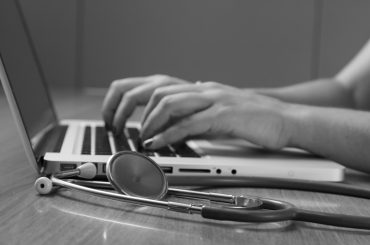IoT, or the Internet of Things, is revolutionizing the healthcare industry. IoT devices and sensors are being used to improve the quality of healthcare by providing real-time monitoring, data analytics, and remote patient management. In this blog, we will discuss how IoT is improving the quality of healthcare and the latest trends and developments in this field.
What is IoT in Healthcare?
IoT in healthcare refers to the network of interconnected devices and sensors that collect and transmit data in real-time. These devices include wearables, sensors, and mobile apps that can monitor various health metrics such as heart rate, blood pressure, and temperature. The data collected by these devices is transmitted to providers, who can use it to monitor patients remotely and make informed decisions about their care.
How is IoT Improving the Quality of Healthcare?
- Real-Time Monitoring: IoT devices provide real-time monitoring of patient health metrics, allowing healthcare providers to detect any abnormalities or changes in the patient’s health status. This enables providers to intervene early and prevent serious health complications.
- Remote Patient Management: IoT devices enable remote patient management, which allows providers to monitor patients from a distance. This is particularly useful for patients who live in remote areas or have mobility issues. Remote patient management also reduces the need for frequent in-person visits, which can be time-consuming and expensive.
- Personalized Care: IoT devices provide personalized care by collecting and analyzing patient data. This data is used to create personalized treatment plans that are tailored to the patient’s specific needs and health status.
- Enhanced Patient Engagement: IoT devices can improve patient engagement by providing patients with access to their health data. Patients can use this data to monitor their progress and make informed decisions about their health.
- Cost-Effective: IoT devices are cost-effective compared to traditional services. Remote patient management reduces the need for frequent in-person visits, which can be expensive. IoT devices also reduce the need for expensive equipment and procedures, making healthcare more affordable.
Latest Trends and Developments in IoT Healthcare
- Wearables: Wearable devices, such as fitness trackers and smartwatches, are becoming increasingly popular in healthcare. These devices can monitor health metrics such as heart rate, blood pressure, and sleep patterns. They can also remind patients to take their medication and track their physical activity.
- Remote Monitoring: Remote monitoring is becoming increasingly popular in healthcare. IoT devices, such as sensors and wearables, can be used to monitor patients remotely. This allows healthcare providers to monitor patients in real-time and intervene early if necessary.
- Predictive Analytics: Predictive analytics is being used to predict patient health outcomes. This is achieved by analyzing patient data, such as health metrics and medical history. Predictive analytics can be used to detect health issues before they become serious and can also be used to create personalized treatment plans.
- Telemedicine: Telemedicine is becoming increasingly popular in healthcare. It allows healthcare providers to deliver services remotely, using video conferencing and other communication technologies. Telemedicine is particularly useful for patients who live in remote areas or have mobility issues.
- Blockchain: Blockchain technology is being used to improve data security in healthcare. Blockchain provides a secure and transparent way to store and share patient data. This technology is particularly useful for sensitive medical data, such as patient records and medical history.
In Conclusion
IoT is revolutionizing the healthcare industry by providing real-time monitoring, remote patient management, personalized care, and cost-effective services. The latest trends and developments in IoT include wearables, remote monitoring, predictive analytics, telemedicine, and blockchain. These trends are improving the quality of care for patients. As healthcare continues to evolve, IoT devices and technologies will continue to play a vital role in delivering high-quality and patient-centered services.
Visit deqode.com for more information





